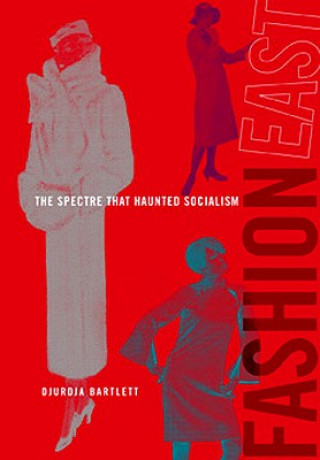
Kód: 04044240
FashionEast
Autor Djurdja Bartlett
The idea of fashion under socialism conjures up images of babushka headscarves and black market blue jeans. And yet, as Djurdja Bartlett shows in this groundbreaking book, the socialist East had an intimate relationship with fashi ... celý popis
- Jazyk:
 Angličtina
Angličtina - Väzba: Pevná
- Počet strán: 344
Nakladateľ: MIT Press Ltd, 2010
- Viac informácií o knihe

29.11 €
Bežne: 30.97 €
Ušetríte 1.86 €

Skladom u dodávateľa v malom množstve
Odosielame za 10 - 14 dní
Potrebujete viac kusov?Ak máte záujem o viac kusov, preverte, prosím, najprv dostupnosť titulu na našej zákazníckej podpore.
Pridať medzi želanie
Mohlo by sa vám tiež páčiť
-

Encyclopedia of World Dress and Fashion, V9: Volume 9: East Europe, Russia, and the Caucasus
311.13 € -

Microsoft Flight Simulator X For Pilots - Real World Training
29.11 € -6 % -

Luftwaffe Sturmgruppen
32.25 € -

Go Ask Alice
10.71 € -20 % -

Helvetica and the New York City Subway System
47.52 € -6 % -

Caviar with Champagne
65.41 € -

Fashionary Womens Figure Panel
13.03 € -

Why Fashion Matters
11.01 € -23 % -

ReFashioned
37.50 € -8 % -

Death or Ice Cream?
10.10 € -13 % -

Capitalism, Socialism and Democracy
25.57 € -5 % -

Girl, Interrupted
11.92 € -

Dior Catwalk : The Complete Collections
65.11 € -22 % -

Fashion and Sustainability: Design for Change
32.45 € -23 % -

Identities Through Fashion
73.60 € -

Textilepedia
33.97 € -23 % -

Native Son
11.52 € -19 % -

Fashion Futures
44.28 € -9 % -

Mein Kampf
29.01 € -

Auguste Racinet. The Costume History
21.73 € -23 % -

Fashion
12.73 € -10 % -

Blood and Honor
22.03 € -3 % -

Magma Sketchbook: Fashion
23.04 € -

The Way of the World
19.91 € -5 % -
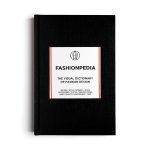
Fashionpedia
39.33 € -23 % -

Dress Scandinavian: Style your Life and Wardrobe the Danish Way
15.76 € -36 % -

Prada Catwalk
72.80 € -13 % -

Little Guides to Style
49.54 € -20 % -

Virgil Abloh - Nike ICONS
55.40 € -13 % -

Look Inside Your Body
10.10 € -24 % -
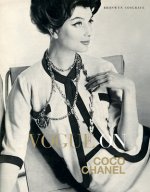
Vogue on: Coco Chanel
16.98 € -19 % -

Vintage Couture Tailoring
30.02 € -14 % -

Fashion Drawing, Second edition
48.43 € -23 % -

Japan Fashion Now
56.01 € -

Khrushchev
13.74 € -12 % -

Casuals
11.11 € -14 % -

Fashion Sketchpad
17.08 € -13 % -

Fashion and Art
60.05 € -

Pax Postrach jezera
8.28 € -16 % -

Co se dnes hraje?
4.14 € -25 % -

Fascie
14.85 € -22 % -

Hypnoporod
9.29 € -22 %
Darčekový poukaz: Radosť zaručená
- Darujte poukaz v ľubovoľnej hodnote, a my sa postaráme o zvyšok.
- Poukaz sa vzťahuje na všetky produkty v našej ponuke.
- Elektronický poukaz si vytlačíte z e-mailu a môžete ho ihneď darovať.
- Platnosť poukazu je 12 mesiacov od dátumu vystavenia.
Viac informácií o knihe FashionEast
Nákupom získate 73 bodov
 Anotácia knihy
Anotácia knihy
The idea of fashion under socialism conjures up images of babushka headscarves and black market blue jeans. And yet, as Djurdja Bartlett shows in this groundbreaking book, the socialist East had an intimate relationship with fashion. Official antagonism--which cast fashion as frivolous and anti-revolutionary--eventually gave way to grudging acceptance and creeping consumerism. Bartlett outlines three phases in socialist fashion, and illustrates them with abundant images from magazines of the period: postrevolutionary utopian dress, official state-sanctioned socialist fashion, and samizdat-style everyday fashion. Utopian dress, ranging from the geometric abstraction of the constructivists under Bolshevism in the Soviet Union to the no-frills desexualized uniform of a factory worker in Czechoslovakia, reflected the revolutionary urge for a clean break with the past. The highly centralized socialist fashion system, part of Stalinist industrialization, offered official prototypes of high fashion that were never available in stores--mythical images of smart and luxurious dresses that symbolized the economic progress that socialist regimes dreamed of. Everyday fashion, starting in the 1950s, was an unofficial, do-it-yourself enterprise: Western fashions obtained through semiclandestine channels or sewn at home. The state tolerated the demand for Western fashion, promising the burgeoning middle class consumer goods in exchange for political loyalty. Bartlett traces the progress of socialist fashion in the Soviet Union, Czechoslovakia, Hungary, East Germany, Poland, and Yugoslavia, drawing on state-sponsored socialist women's magazines, etiquette books, socialist manuals on dress, private archives, and her own interviews with designers, fashion editors, and other key figures. Fashion, she suggests, with all its ephemerality and dynamism, was in perpetual conflict with the socialist regimes' fear of change and need for control. It was, to echo the famous first sentence from the Communist Manifesto, the spectre that haunted socialism until the end.
 Parametre knihy
Parametre knihy
Zaradenie knihy Knihy po anglicky The arts Industrial / commercial art & design Fashion & textiles: design
29.11 €
- Celý názov: FashionEast
- Autor: Djurdja Bartlett
- Jazyk:
 Angličtina
Angličtina - Väzba: Pevná
- Počet strán: 344
- EAN: 9780262026505
- ISBN: 0262026503
- ID: 04044240
- Nakladateľ: MIT Press Ltd
- Hmotnosť: 1470 g
- Rozmery: 294 × 209 × 35 mm
- Dátum vydania: 08. October 2010
Obľúbené z iného súdka
-

Iris Apfel
27.09 € -23 % -
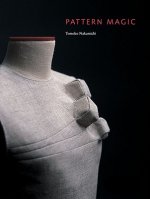
Pattern Magic
21.73 € -23 % -

Pattern Magic 2
25.27 € -10 % -
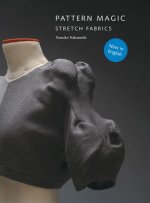
Pattern Magic
22.64 € -20 % -

Italian Tailoring
38.82 € -23 % -

Fashion Design Reference & Specification Book
22.74 € -10 % -

Pattern Magic 3
21.73 € -23 % -

Vivienne Westwood Catwalk
72.80 € -13 % -

Denim Manual
31.84 € -23 % -

19th-Century Fashion in Detail (Victoria and Albert Museum)
27.09 € -23 % -

Book of Pockets
56.62 € -

Finishers' Manual - Containing the Receipts of an Expert for Finishing the Bottoms of Boots and Shoe, as Well as Other Valuable Information
21.33 € -

Sneakers
21.73 € -23 % -

Designing, Cutting and Grading Boot and Shoe Patterns, and Complete Manual for the Stitching Room
27.09 € -

How to Repair Shoes
21.33 € -

Home Book to Learn Expert Shoe Repairing
14.55 € -

How to Bottom a Welted Shoe by Hand
21.33 € -

World of Anna Sui
36.60 € -13 % -

Art of Dressing Curves
47.82 € -

Chanel Catwalk
65.11 € -22 % -

Sneaker Freaker. The Ultimate Sneaker Book
51.36 € -

Patternmaking for Fashion Design
88.67 € -

Tom Ford
110.61 € -20 % -

Fashionary Bag Design
30.83 € -23 % -

Fashion Illustration and Design
27.09 € -23 % -

Poses for Fashion Illustration (Card Box)
21.22 € -23 % -

Face Paint
26.58 € -13 % -

Little Book of Chanel
14.05 € -22 % -

Supreme
40.74 € -19 % -

It
16.37 € -2 % -

Hermes pop-up
24.36 € -23 % -

For the Love of Bags
40.84 € -

Chanel
36.39 € -13 % -

Little Book of Prada
14.05 € -22 % -

Dressing the Man
46.81 € -4 % -

Fashion Patternmaking Techniques: Women/Men How to Make Shirts, Undergarments, Dresses and Suits, Waistcoats, Men's Jackets
34.77 € -

Fashion Patternmaking Techniques
35.68 € -

Italian Gentleman
31.84 € -24 % -
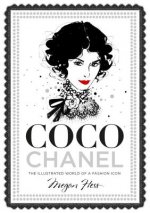
Coco Chanel
19.51 € -19 % -

Fashion Business Manual
35.68 € -19 % -

Postcards from Vogue
16.67 € -23 % -

Little Book of Gucci
14.55 € -20 % -

Martin Margiela
57.83 € -3 % -
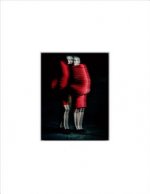
Rei Kawakubo/Comme des Garcons
48.22 € -4 % -

Medieval Tailor's Assistant
46.30 € -
![Fashion Patternmaking Techniques - Haute couture [Vol 1] Fashion Patternmaking Techniques - Haute couture [Vol 1]](https://media.libris.to/jacket/12985659t.jpg)
Fashion Patternmaking Techniques - Haute couture [Vol 1]
29.72 € -

Chanel
13.44 € -19 % -

Fashion: The Whole Story
26.38 € -17 % -

Ann Demeulemeester
142.97 €
Osobný odber Bratislava a 2642 dalších
Copyright ©2008-24 najlacnejsie-knihy.sk Všetky práva vyhradenéSúkromieCookies


 21 miliónov titulov
21 miliónov titulov Vrátenie do mesiaca
Vrátenie do mesiaca 02/210 210 99 (8-15.30h)
02/210 210 99 (8-15.30h)